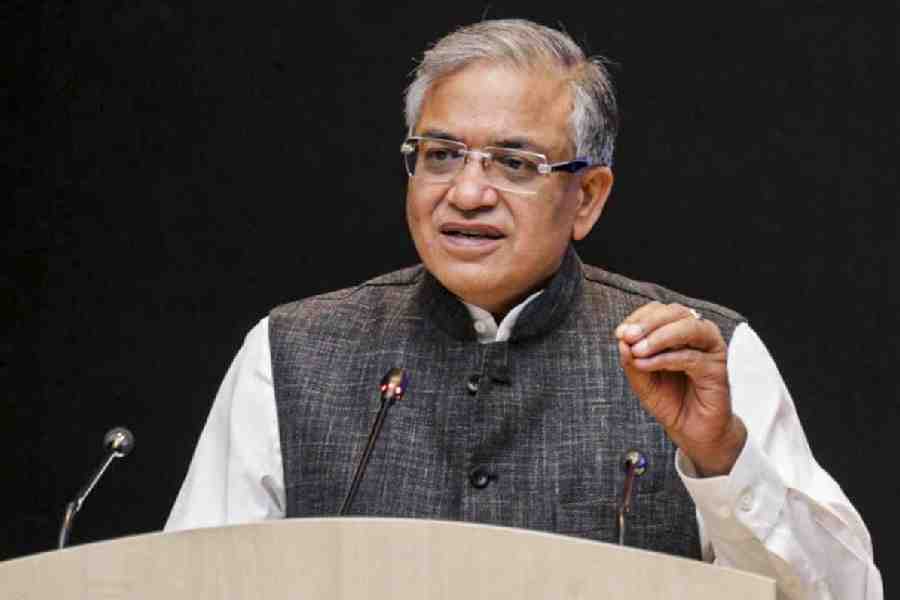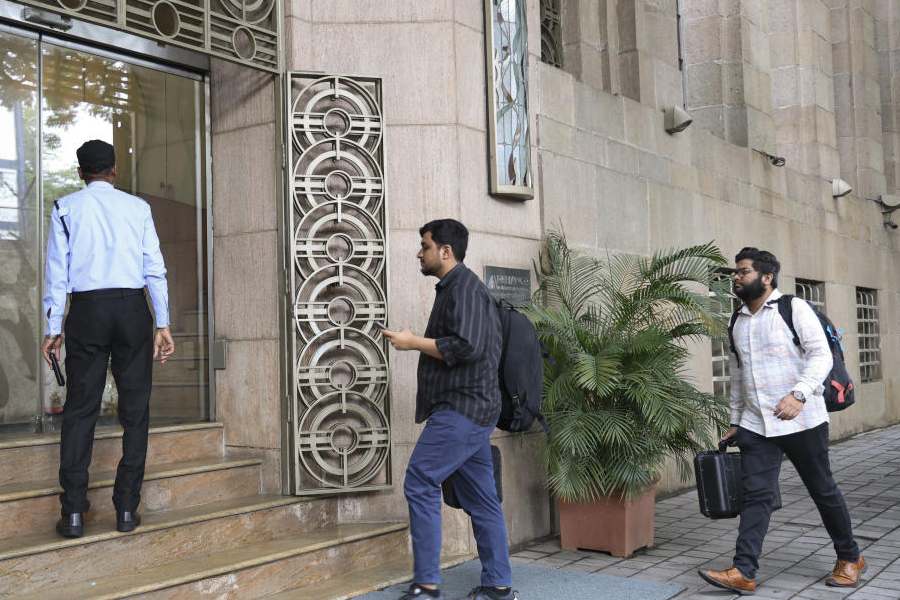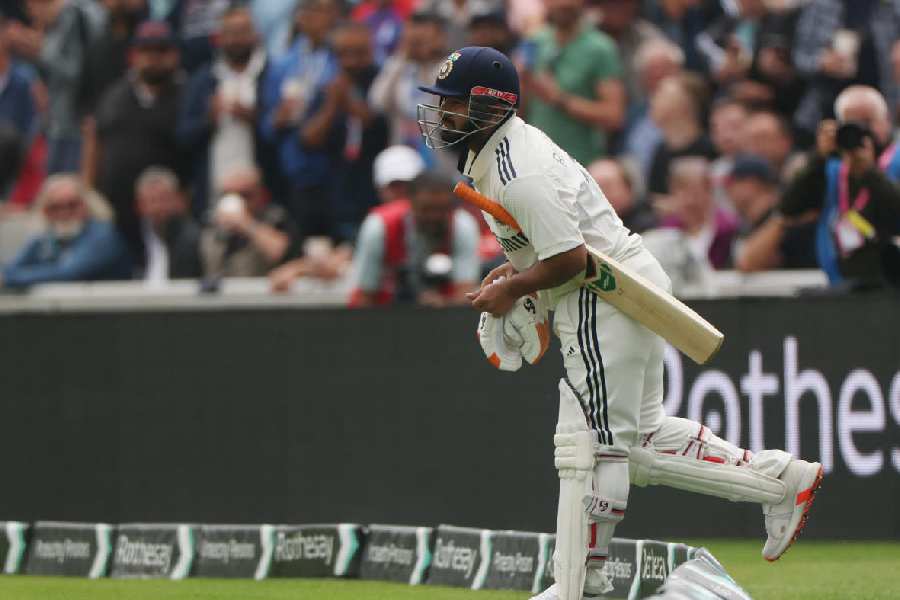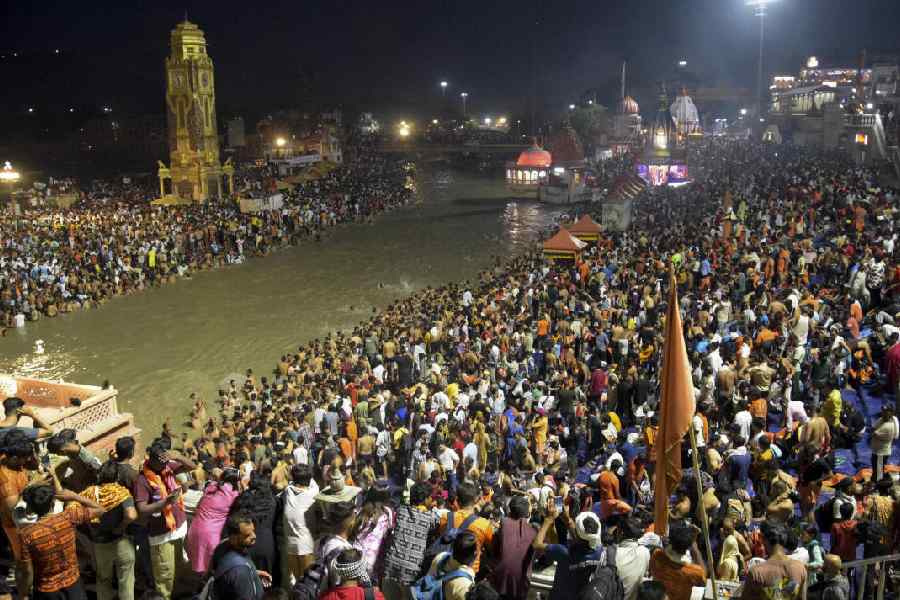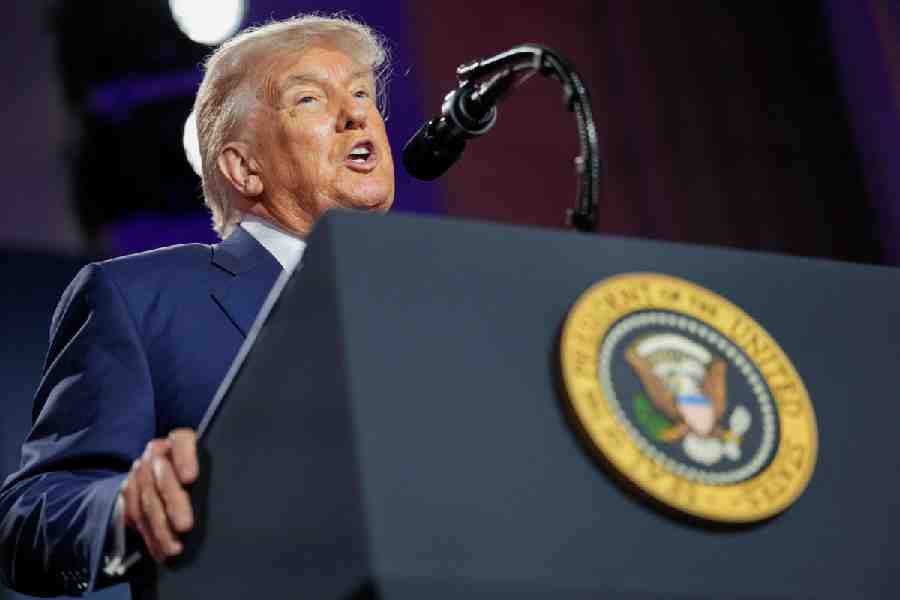
The good things in life can come in large sizes. I get the idea when I reach former member of Parliament Naveen Jindal's stately white residence in central Delhi. Jindal is the man who has been spearheading the movement for the Indian national flag. Fly it, hoist it, wear it - and keep it big, he says.
Jindal is passionate - some would say obsessive - about the Tricolour. You cannot pass Connaught Place in Delhi without noticing the huge flag that's been put up there by Jindal's Flag Foundation of India. It stands 207 feet high. His idea of putting up monumental flags has been endorsed by the human resource development (HRD) ministry, which last week urged vice-chancellors of central universities to hoist 207-foot high flags on campuses across India.
How did he come up with odd figure of 207 feet? Why not 200 feet, or 210?
The idea for the monumental flags, the Congressman explains, came from party vice-president Rahul Gandhi. "Rahul ji told me there were monumental flags in Dubai, Jordan and elsewhere and gave me their photographs. So I began working on the concept and came across David Chambers whose company had built giant flagpoles across the world. David told us that for a city like Delhi the ideal height should be between 60 and 65 metres," he recalls.
Sixty metres converts to 200 feet. But Jindal settled for 63 metres, or about 207 feet. "I felt 63 was a good number and it also adds up to 9, which is the highest single digit number. That is how the 207-foot flag was born. It took me six-and-a-half years to get permission to instal the flag in Delhi in 2014 because of bureaucratic bottlenecks," he says.
But he is having second thoughts now about the height, though he is happy that his idea has won the support of the HRD minister, Smriti Irani. "Universities are temples of learning and this should remind students of their duty towards the country," the steel baron and two-time Congress MP from Haryana's Kurukshetra says.
However, he points out, the cost of installing and maintaining a flag that high is enormous. And that's why he has decided to write to Irani on behalf of the Flag Foundation of India, the NGO that he runs, to bring down the height of the Tricolour to 100 feet. "A 100-foot flag will help in achieving the same objective, which is to make people proud of their country."
According to him, it costs about Rs 10 lakh to plant a 100-foot flag and about Rs 50 lakh for a 207-foot one. Also, he points out that a 100-foot flag need not be lowered at night, as government rules specify.
One can tell that Jindal, who studied commerce at Hans Raj College, Delhi, and then management from the University of Texas in Dallas, likes numbers. With figures, he explains that the minimum height of a flagpole should be in accordance with the height of the buildings around it - but neither too high, nor too low.
This is a subject that he has devoted considerable time to. The width of the flag should be one-third or one-fourth of the height of the flagpole; the length should be one-and-a-half times the width. So, for a 207-foot flagpole, the flag size should be 5,400 square feet (60ft x 90ft), he explains.
Just to make sure that I understand the numbers, he asks me the size of the flat I live in. About 1,000 square feet, I reply. "So you can understand how big the size of the flag is on a 207-foot pole? Five times the size of your flat?" I get the point.
Jindal is the chairperson of Jindal Steel and Power Limited (JSPL). Forbes lists the Jindals as the 155th richest family in the world, and the 12th richest in India, with a net worth of US$6.4 billion. His family has also been politically inclined - his parents were both ministers in Haryana. Jindal, a skeet shooting champion, lost the Kurukshetra seat to the Bharatiya Janata Party in 2014. His father, O.P. Jindal, who died in a helicopter crash in 2005, held the seat from 1996 to 1998 on behalf of the Haryana Vikas Party.
Naveen Jindal has been putting up flags ever since he won a case in the Supreme Court which gave citizens the right to hoist or fly the national flag. The first huge one was installed in 2009 in Kaithal in his then constituency. His foundation has so far planted 65 monumental flags. "We have installed 12-15 flagpoles of 207 feet and around 50 flagpoles measuring 100 feet across the country."
The industrialist says he had approached West Bengal chief minister Mamata Banerjee for permission to instal a 207-foot flagpole either near the Victoria Memorial or somewhere close to the Maidan in Calcutta, but has not received any response from her so far. "I plan to write to her again," he says.
Our conversation is now taking place in his car, as we make our way to a venue where a prayer meeting is being held in memory of the late Congress Lok Sabha speaker, Balram Jakhar. On the way, he points to a 100-foot flag installed by the Flag Foundation at Shantipath, near the diplomatic area. "Doesn't it look beautiful," he asks me, sliding open the car's sunroof so that I can have a good look at it.
Jindal is ramrod straight, and looks younger than his 46 years. He grabbed the limelight in 2012 when he executed a sting operation on two television journalists, whom he accused of trying to extort money from him. In 2013, the Central Bureau of Investigation conducted searches in Jindal's home and offices and accused him of graft in the allocation of mining rights. A special court has fixed March 4 for pronouncing its order on the framing of charges.
Till then, his thoughts are on the flag.
The trigger for his flag mission, he says, was a notice that was slapped on him by the commissioner of Bilaspur for flying the Tricolour at his factory. The Flag Code of India permitted private citizens to fly the flag only on Independence Day and Republic Day. He moved court and, after a 10-year-long legal battle, the Supreme Court ruled in his favour on January 23, 2004.
Then, one day, while chatting with the then Speaker Somnath Chatterjee, Jindal learnt another quirky fact about the use of the flag. Jindal had gone to Chatterjee to complain about the fact that while the government had banned smoking in public places, MPs were happily smoking in the Central Hall.
"Somnath ji agreed to consider my plea to ban smoking in Parliament but during our meeting he pointed out that the lapel pin of the national flag I was wearing was not allowed," he says. The rule needed to be changed, Jindal thought, and submitted a letter to Chatterjee on this. "An order was passed by Parliament in 2010 giving MPs the right to wear the flag as a badge," he says.
Today, one can wear the flag on caps, T-shirts, helmets - anywhere above the waist, Jindal says.
The Tricolour, clearly, is an inseparable part of him - it is there in his residence, in his office and even in his car. He fists out a handful of Tricolour lapel pins from a box in his car and asks me to keep them as a memento.
But does one need to wear one's nationalism on one's sleeve, I ask him. The decision on hoisting of flags on campuses has also come at a time when there is a fierce debate raging on what constitutes nationalism.
"To me the national flag is a symbolic gesture. The flag represents the people of the country and reminds us of our duties towards the country," he says. So, where does the size come in?
"The size of the flag should be proportionate to the area where it is displayed," he replies. But his campaign, he stresses, is to make the flag accessible to the common man. "For thousands of years, be it in a monarchy or a republic, the flag has always symbolised the State, never the common man. The Supreme Court verdict allowed the display of the national flag on all days of the year," he notes.
As we wind up the interview, I ask him about JSPL, which is believed to be the world's largest coal-based sponge iron manufacturing unit. The going has been good, he says. "But we are going through a challenging phase because of the dumping from China."
Before we part, the Congress leader urges me to have a look the 207-foot flag at Rajiv Chowk or Connaught Place. "You will see a lot many youngsters clicking selfies in front of the flag," he says. I go there right after the interview and stand underneath it.
The flag, illuminated in all its glory, and fluttering high in the air, looks majestic. It also tells me how small my flat is.


